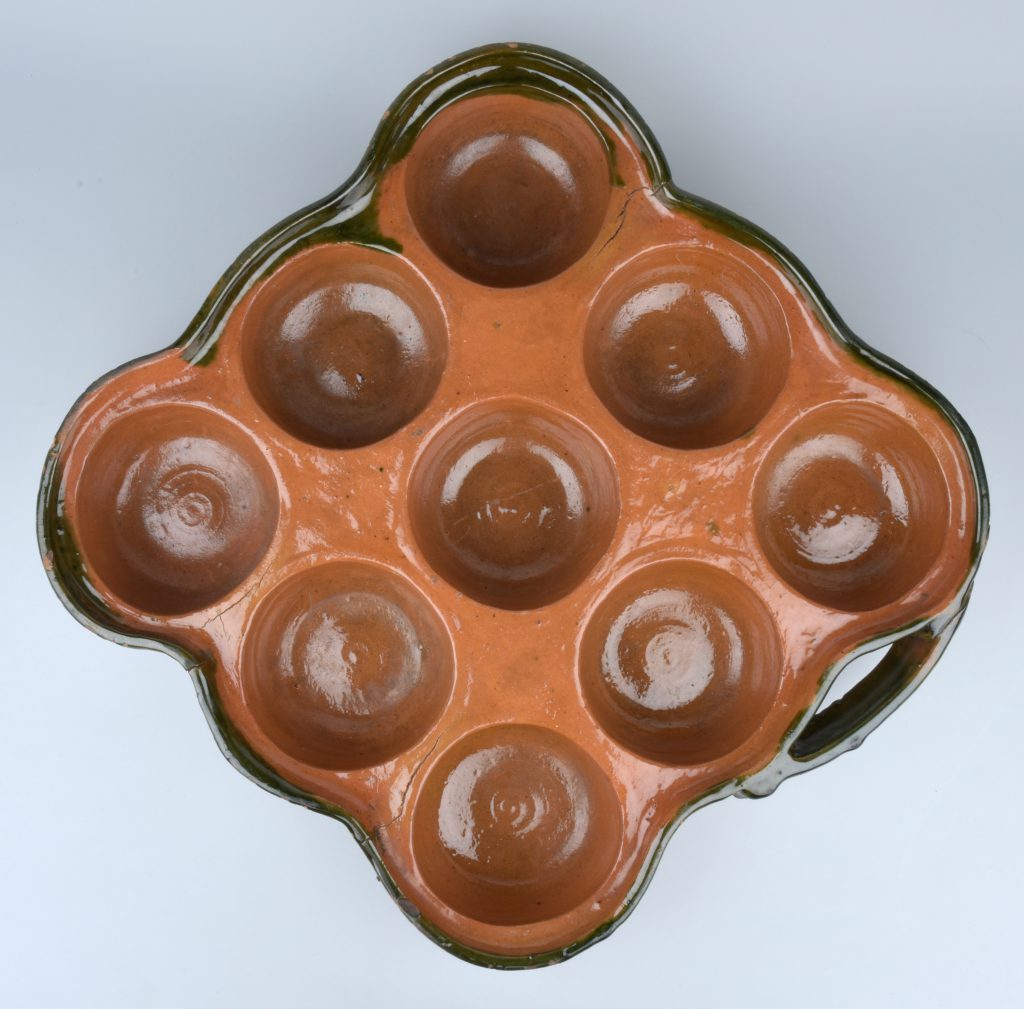
Lead glaze was very popular as one of the simpler methods of decorating pottery with the added advantage of making the vessel impermeable to water and easier to clean. It was only used in oxidation firing because a reducing kiln atmosphere would turn the lead in the glaze back into its original black state. Lead glazes usually consist of one of several lead oxides (PbO, Pb3O4, PbO2; massicot, litharge, gold litharge, minium or red lead), clay and quartz sand. The lead in this formula acts as a fluxing agent that reduces the temperature. It usually produces a slightly yellow glaze (due to iron impurities) that melts easily and is soft, shiny and transparent. It can be dyed using other metals such as copper oxide, cobalt or iron manganese compounds. Lead glaze also tends to intensify the colour effect of the underlying ceramic body and engobe or slip.
The glaze formula is often ground to a fine powder (using a glaze crusher or ball mill) and can then be applied directly (dry glazing) or mixed with water (wet glazing by pouring, dipping or spraying).
Depending on the period, lead glazes were applied either to the inside, to the outside or to both sides of the vessel without a slip. They could be either colourless with a slight yellow hue, or intensely yellow, green, blue or dark brown/manganese. The colour depended on the added metal ions, but even more so on the underlying ceramic body or slip. In Switzerland, lead glazes were first used in the late 13th century to adorn special ceramic objects.It was only over the course of the 14th century that lead glaze began to be used on the insides of vessels for its sealing effect.
The preparation and use of lead glazes was the underlying cause of the dreaded “potter’s disease” or lead poisoning (Mämpel 1994).
Translation Sandy Haemmerle
German: Bleiglasur
French: glaçure plombifère, glaçure au plomb
References
Mämpel 1994
Uwe Mämpel, Die Bleiglasur in der Keramik (Deutsche Keramische Gesellschaft, Fachausschussbericht Nr. 31), Köln 1994.

